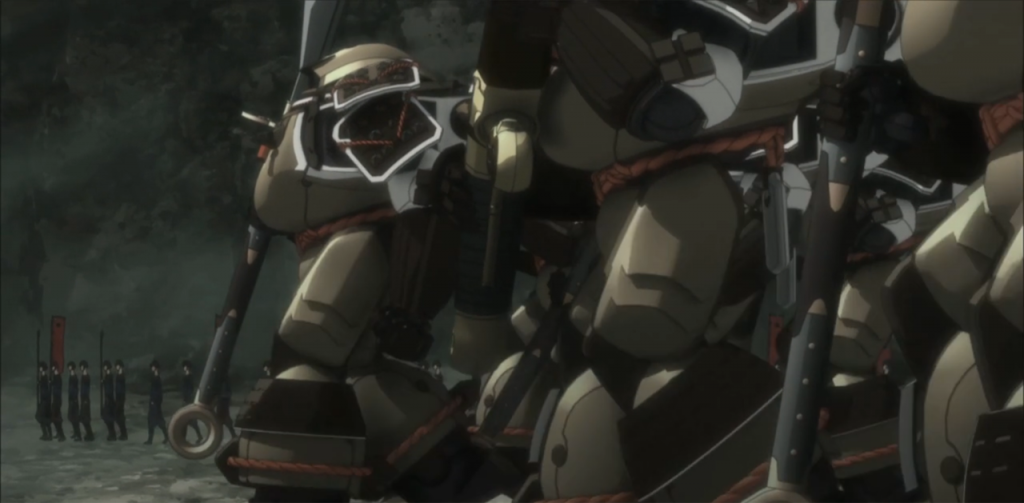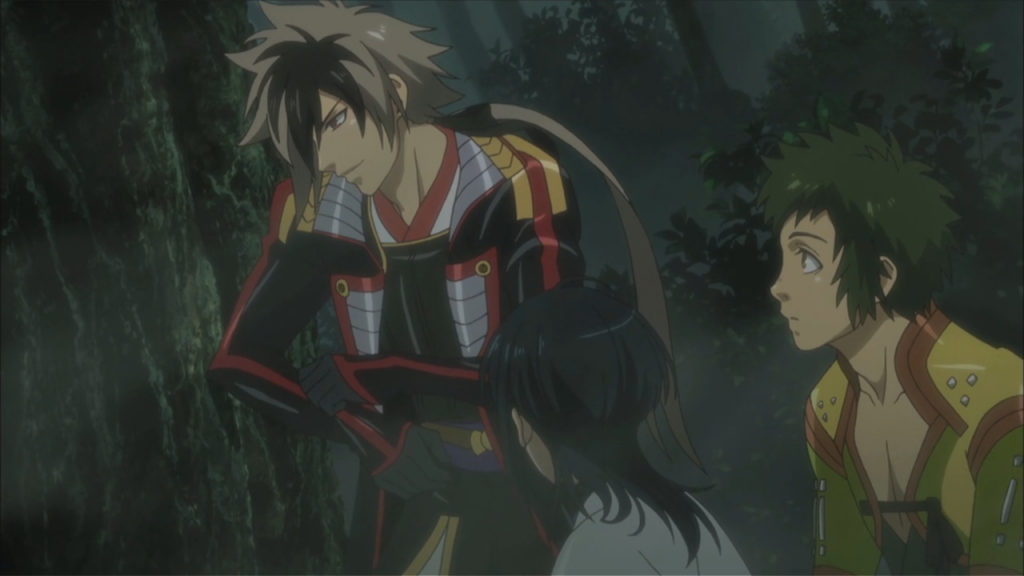SPOILER WARNING. This article contains spoilers for episodes 1 – 3 of Nobunaga the Fool. If you don’t want to know, click away now!
History-based anime just keeps on getting weirder, and the first of the Winter 2013/2014 season’s entry to the genre, Nobunaga the Fool, may just be the craziest yet.
We are introduced to the show by a bizarre dream sequence, in which we see French heroine Joan of Arc being burned at the stake. In the midst of the flames, we see 16th century Japan burning through the acts of war, and in the centre of it all: Oda Nobunaga. What could be possibly linking a French woman from the 15th century and a Japanese warlord from the 16th? You could say two dragons, or rather two planets that house the spirits of dragons. Unlike our world, the world in Nobunaga the Fool is split in two: Europe occupies the Western Planet, while Japan occupies the Eastern Planet. Long ago they were peaceful, bound by the “Dragon Pulse”. However, war soon broke out and it now continually threatens the existence of both planets. Joan of Arc experiences visions of the destruction of her home planet, with Oda Nobunaga seemingly the only answer. Seeking to fulfill her destiny, she teams up with Leonardo da Vinci of all people, and heads on a spaceship to the Eastern Planet.
Meanwhile on the Eastern Planet, Oda Nobunaga is wasting time to avoid attending his brother’s coming of age ceremony. He’s out hunting with his two good friends, Toyotomi Hideyoshi (humorously nicknamed “Monkey”) and Akechi Mitsuhide. However, the three discover that Takeda forces are preparing to make an attack on the mighty Oda clan. Knowing that the neighbouring fortress won’t survive, they hurry on to warn them. They arrive with Takeda’s forces hot on their heels and can do nothing to stop the fortress being demolished by giant suits of samurai armour.
Yes, you heard right: the opposing Japanese forces control giant mecha. While not coming as a surprise considering medieval Europe has spaceships, they stand out for their interesting designs, mimicking the traditional armour of Japanese foot soldiers, rather than being the steel obelisks that are frequently seen as ground units in the mecha genre.
As Nobunaga falls to his knees on the muddy field, the dark clouds and rain giving adequate atmosphere, a shining light falls from the sky to save the day. Our eager young hero jumps into the descended spaceship, and emerges with a giant mech unit of his own, this one being a valiant looking piece typical of the mecha genre. The imagery is clear here: Nobunaga is the good guy and is here to save both worlds from all their demons. These demons just happen to be historical and mythical figures from European history, as it emerges that the spaceship that carried Joan of Arc and Leonardo da Vinci to the Eastern Planet was under the control of King Arthur and the Knights of the Round Table. Seeing the pair as getting in the way of their plans and being miffed about them stealing a smaller spaceship, the Round Table are determined to bring them down, but are handily stopped for the time being by Nobunaga and his giant mecha. So as Nobunaga and chums return home to his waiting father, brother and sister-girlfriend, the Round Table plots more dastardly deeds.
Confused yet? If so you’re not alone, as the incomprehensible story chucks ideas at you at an incredibly fast rate that expects you to understand a lot of hidden motives. Hopefully the show will slow down and have more focus on the central characters, but it’s not yet possible to see in which direction the show will go.
Sadly it seems those historical characters are just names for attracting people to the show, as they bear no realism with their real-life counterparts. Instead, the characters are designed in a typical shonen fashion that make each character’s role fairly obvious. Whether you like them or not depends if you can get behind the same stereotypical roles for the umpteenth time, or get past the trashing of Joan of Arc’s heroic character in favour of making Nobunaga look super cool.
It certainly wouldn’t be surprising if those two words were continually thrown up in production meetings at Satelight as the focus is definitely on the action. The battles feel appropriately scaled for your TV screen, and offer plenty of shouting, tactics, fisticuffs and explosions. More fantasy elements are poured in as we learn that specific armour units can produce earth-shattering elemental attacks when equipped with items known as regalia. The animation feels best at these moments, teetering into the 3D CGI realm, but otherwise feels typical for your standard action show.
At the moment, those three words describe the series best. Three episodes in and its already a generic action series aimed at teenage boys who are more in love at seeing opposing factions go at each other with giant mechs than the underlying history behind the characters. Considering the anime is part of a wider project which includes a stage play, the anime’s lack of ambition in challenging the staples of the shonen genre make it seem rather disappointing.
